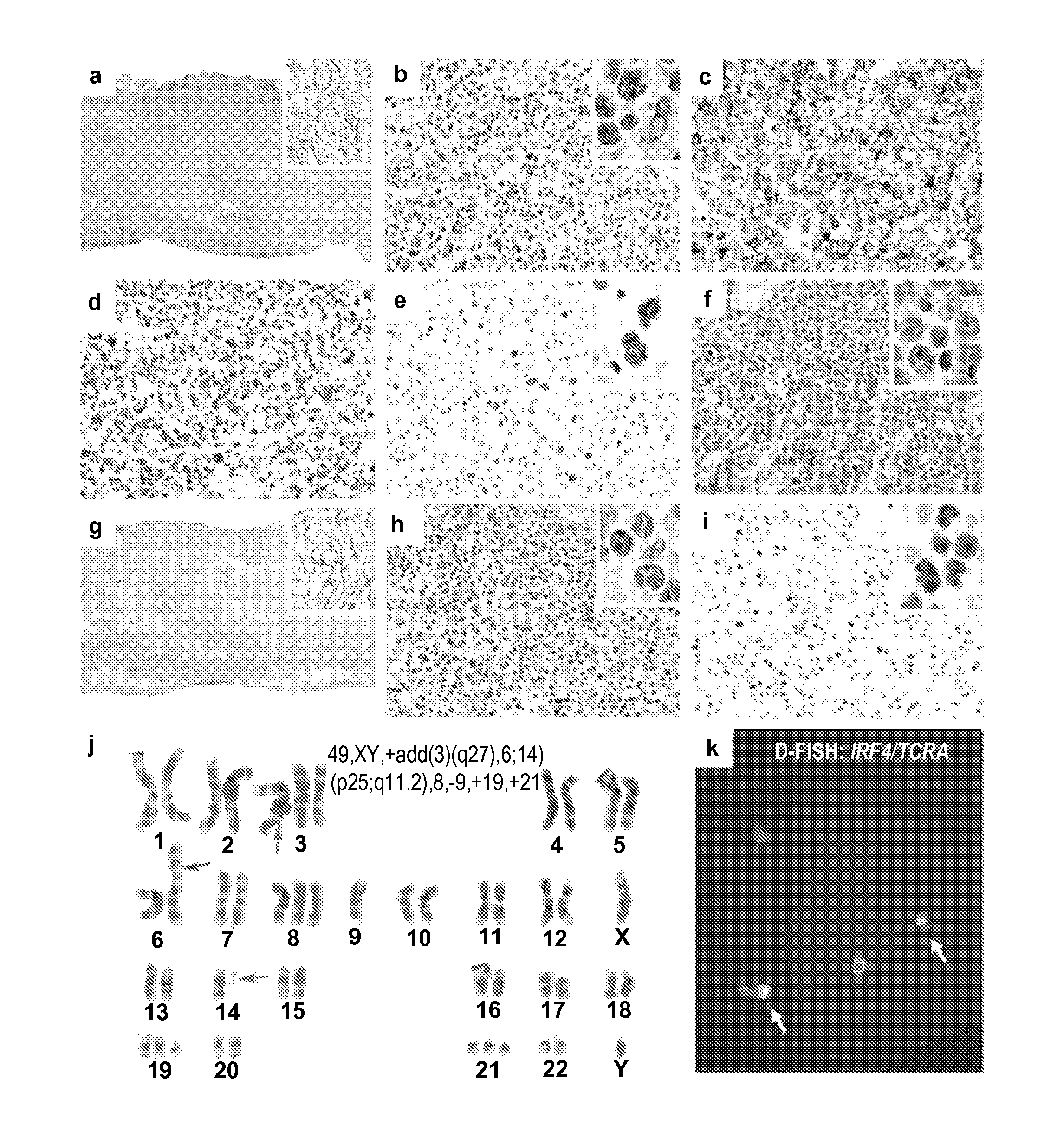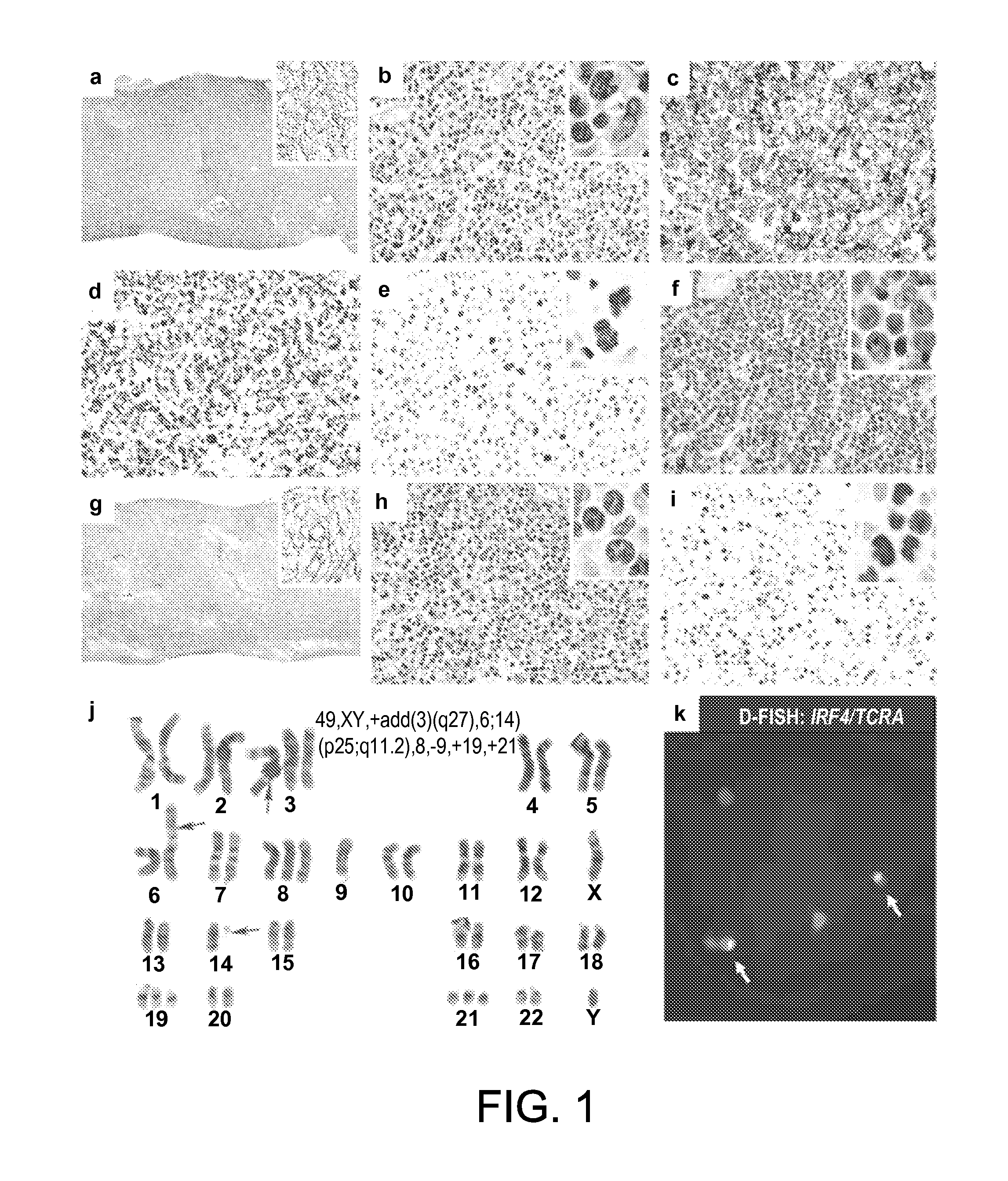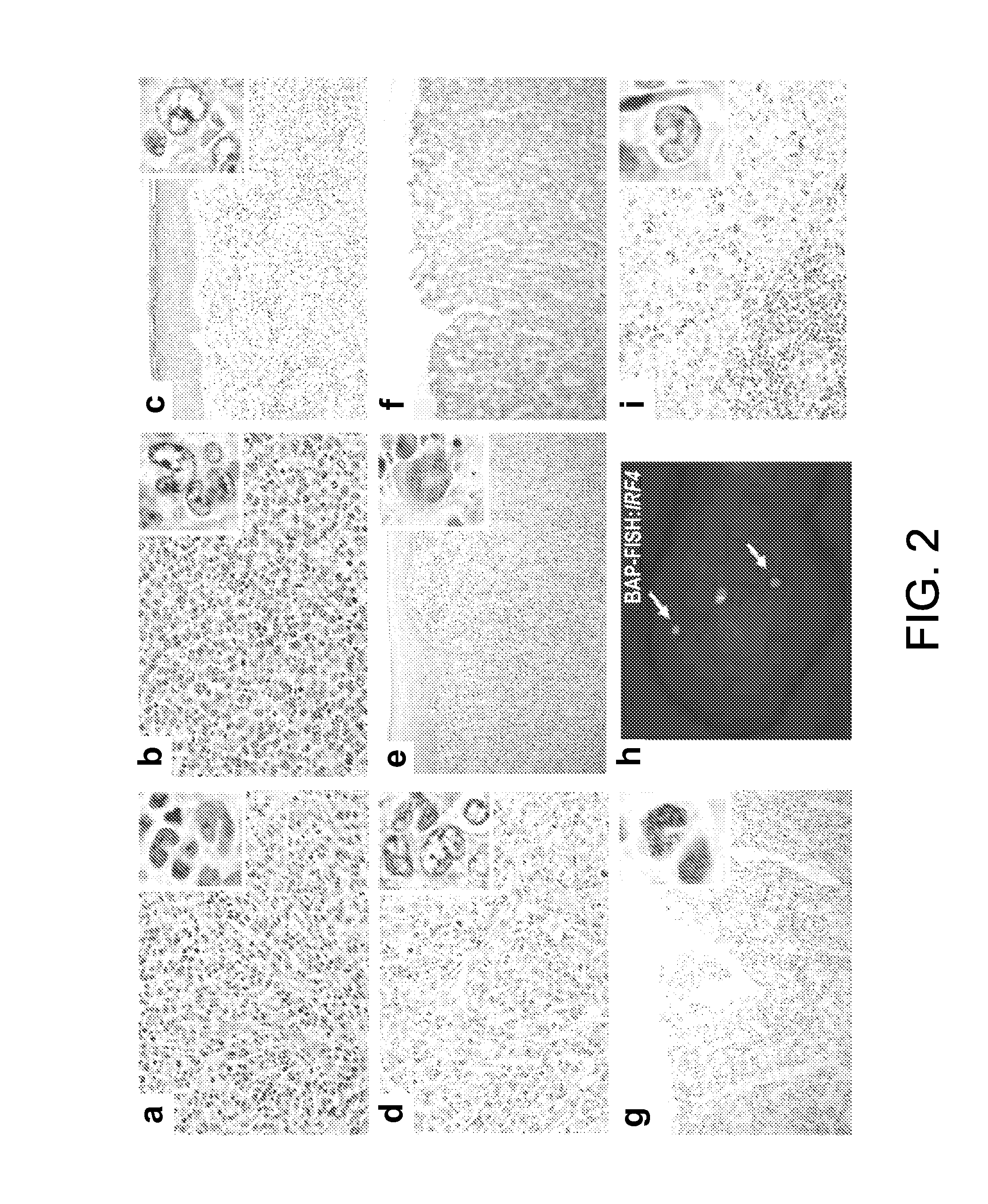Reducing irf4, dusp22, or flj43663 polypeptide expression
a polypeptide and expression technology, applied in the field of reducing irf4, dusp22, or flj43663 polypeptide expression, can solve the problem that ptcls are fatal in the majority of patients
- Summary
- Abstract
- Description
- Claims
- Application Information
AI Technical Summary
Benefits of technology
Problems solved by technology
Method used
Image
Examples
example 1
Recurrent Translocations Involving the IRF4 Oncogene in Peripheral T-Cell Lymphomas
[0070]Specimens from 169 patients with primary T-cell lymphomas (PTCL) diagnosed by WHO criteria were studied. There were 104 males and 65 females (M:F ratio, 1.6:1). The mean age was 58 years (range, 5-92 years). Cases included 23 angioimmunoblastic T-cell lymphomas (AITLs, 13%), 72 PTCL-unspecified (43%), 18 ALK-positive anaplastic large-cell lymphomas (ALCLs) (11%), 24 ALK-negative ALCLs (14%), 14 C-ALCLs (8%), and 18 other PTCLs (Table 1).
TABLE 1IRF4 Translocations and IRF4 Protein Expression in Peripheral T-cell LymphomasFISHImmunohistochemistryDiagnosis# pos.*%# pos.*%Angioimmunoblastic T-cell lymphoma0 / 190 0 / 23 0PTCL, unspecified3 / 64520 / 7228(CD30-positive)(1 / 17)(6)(13 / 18)(72)(CD30-negative)(2 / 47)(4) (7 / 54)(13)Anaplastic large cell lymphoma, ALK-positive0 / 18016 / 1794Anaplastic large cell lymphoma, ALK-negative1 / 23420 / 2291Cutaneous anaplastic large cell lymphoma8 / 1457 13 / 1493T-cell large granular ...
example 2
IRF4 Translocations are Specific for Cutaneous Anaplastic Large Cell Lymphoma
[0080]Skin biopsies involved by T-cell lymphoproliferative disorders from 68 patients were classified by WHO / EORTC criteria. Clinicopathologic data for classification included progression / regression of lesions, history of mycosis fungoides (MF) or other cutaneous T-cell lymphoproliferative disorders, anatomic site and timing of extracutaneous disease, morphology, immunophenotype, and T-cell clonality if needed. Cases that could not be classified definitively were excluded. FISH for IRF4 was performed using a breakapart probe. Positive cases also were screened for T-cell receptor (TCRA, TCRB, and TCRG) rearrangements. FISH was scored by a cytogeneticist using previously established normal ranges based on 95% confidence intervals.
[0081]Among cALCLs, 9 / 22 (41%) demonstrated abnormal separation of the IRF4 breakapart probe, indicating an IRF4 translocation. None of the 46 remaining T-cell lymphoproliferative di...
example 3
Human T-Cell Lymphoma Lines Express IRF4
[0083]To develop an in vitro model for studying IRF4 in T-cell lymphomas, human T-cell lymphoma cell lines were screened by western blot and immunohistochemistry. All T-cell lymphomas and, T-cell lymphoma cell lines tested (SUDHL-1, SR786, Karpas 299, SeAx, MyLa, and HuT78) were positive for IRF4. T-cell lymphoblastic leukemia cell lines were negative for IRF4 (FIG. 5A). Western blotting for MYC was also performed. Cell lines with weaker IRF4 expression also showed weaker expression of MYC (FIG. 5B).
PUM
| Property | Measurement | Unit |
|---|---|---|
| pH | aaaaa | aaaaa |
| fluorescence in situ hybridization | aaaaa | aaaaa |
| breakapart fluorescence in situ hybridization | aaaaa | aaaaa |
Abstract
Description
Claims
Application Information
 Login to View More
Login to View More - R&D
- Intellectual Property
- Life Sciences
- Materials
- Tech Scout
- Unparalleled Data Quality
- Higher Quality Content
- 60% Fewer Hallucinations
Browse by: Latest US Patents, China's latest patents, Technical Efficacy Thesaurus, Application Domain, Technology Topic, Popular Technical Reports.
© 2025 PatSnap. All rights reserved.Legal|Privacy policy|Modern Slavery Act Transparency Statement|Sitemap|About US| Contact US: help@patsnap.com



